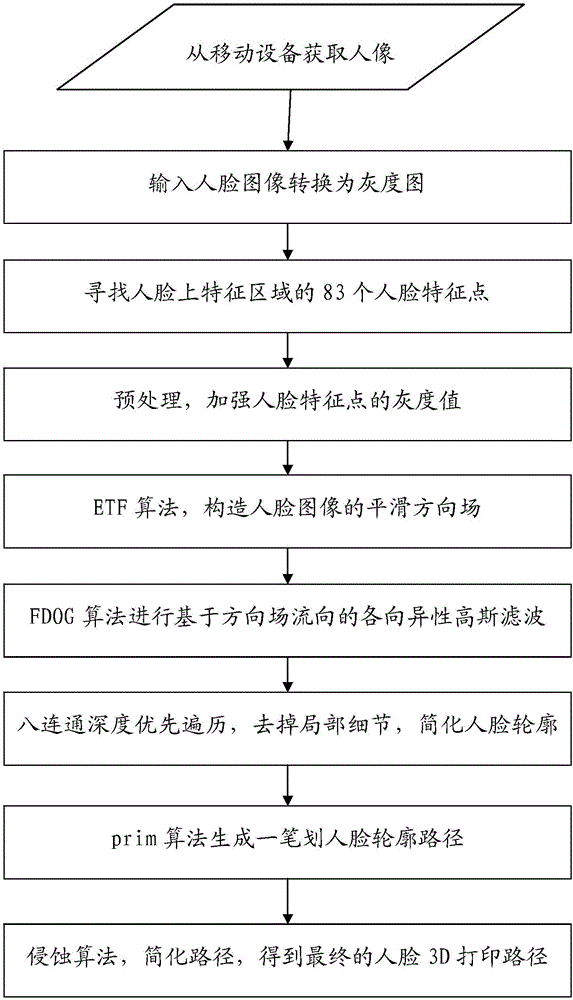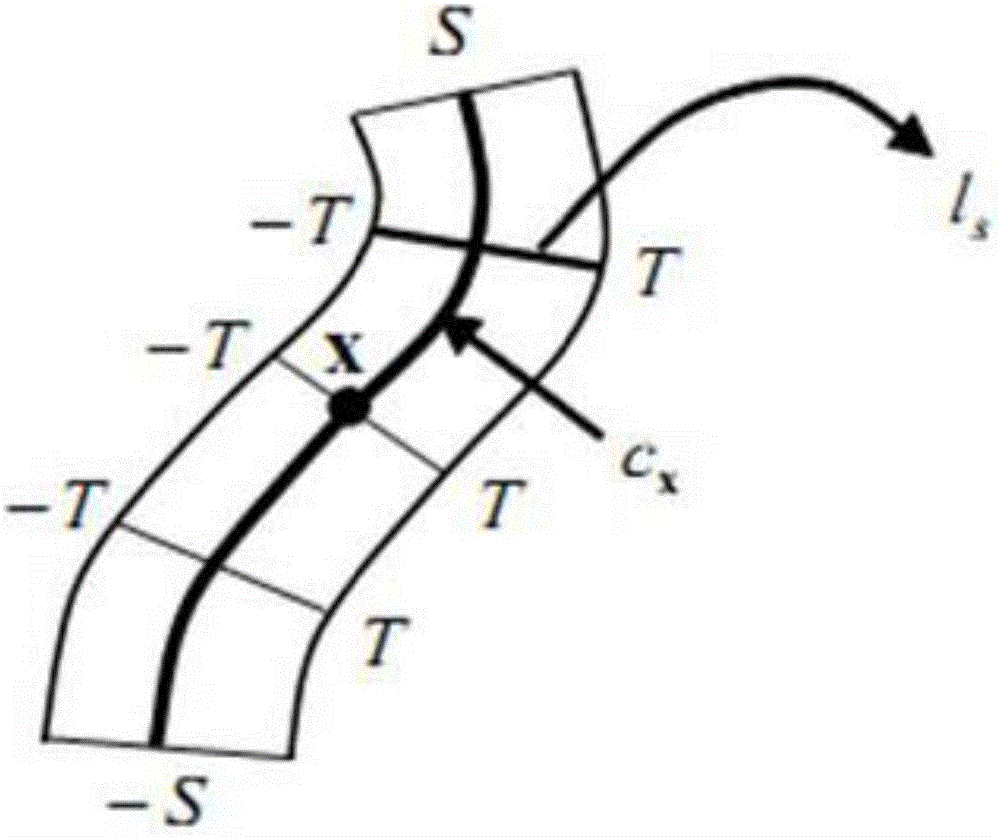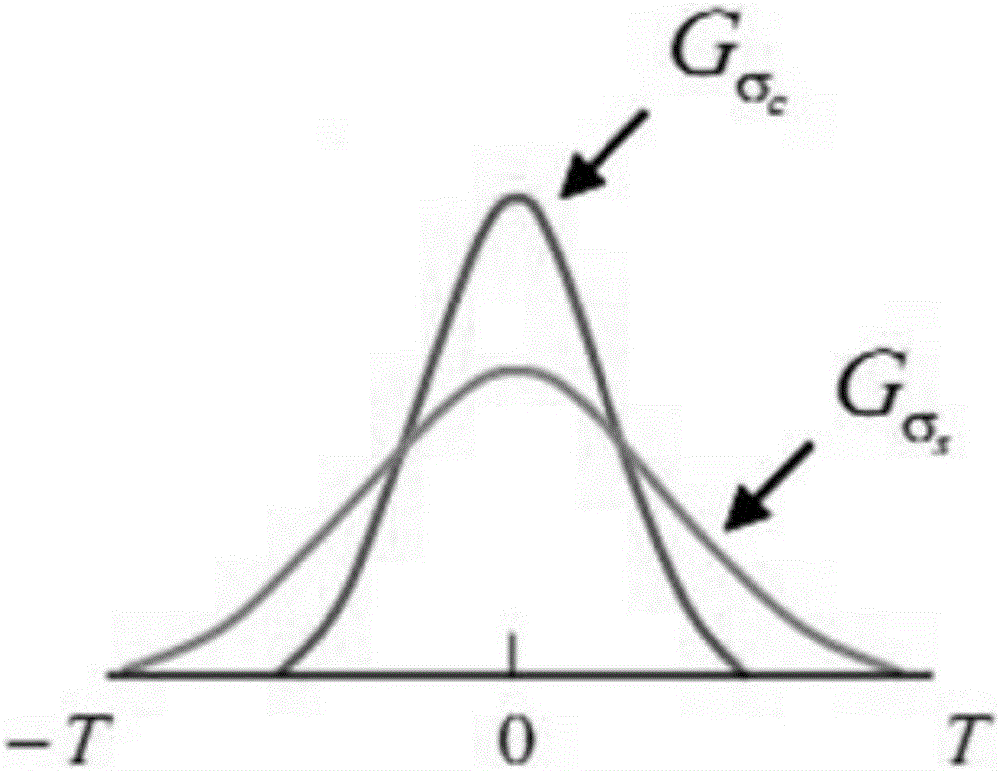3D portrait food printing method
A portrait and food technology, applied in the field of computer graphics and image processing, can solve the problems of affecting the appearance and increasing the thickness
- Summary
- Abstract
- Description
- Claims
- Application Information
AI Technical Summary
Problems solved by technology
Method used
Image
Examples
Embodiment Construction
[0075] A 3D portrait food printing algorithm of the present invention will be further described in detail below in conjunction with the accompanying drawings and specific embodiments.
[0076] like Figure 1~4 As shown, a 3D portrait food printing algorithm includes the following steps:
[0077] 1) Convert the source image collected by the peripheral to a grayscale image
[0078] Collect face images through mobile phones or other external devices, and then convert the source images expressed in the RGB color space into grayscale images.
[0079] Gray=R*0.299+G*0.587+B*0.114
[0080] Gray represents the gray value, R, G, B is a color space red green black this vector represents a color value.
[0081] 2) Use the API provided by face++ to identify 83 face feature points in the face feature area, and obtain 83 feature points covering the contour of the face, including eyebrows, eyes, nose, and mouth contour;
[0082] According to the distribution of key features on the face, ...
PUM
 Login to View More
Login to View More Abstract
Description
Claims
Application Information
 Login to View More
Login to View More - R&D
- Intellectual Property
- Life Sciences
- Materials
- Tech Scout
- Unparalleled Data Quality
- Higher Quality Content
- 60% Fewer Hallucinations
Browse by: Latest US Patents, China's latest patents, Technical Efficacy Thesaurus, Application Domain, Technology Topic, Popular Technical Reports.
© 2025 PatSnap. All rights reserved.Legal|Privacy policy|Modern Slavery Act Transparency Statement|Sitemap|About US| Contact US: help@patsnap.com



